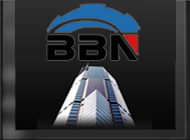Surface treatment and anti-corrosion measures for EN 10025 E360 steel
EN 10025 E360 steel is a structural steel commonly used in construction and machine building. For this type of steel, surface treatment and anti-corrosion measures are crucial to extend its service life and protect the steel from the effects of corrosion and oxidation.
1. Surface treatment method:
Hot-dip galvanizing: covering the surface of EN 10025 E360 steel with zinc to form a zinc layer, providing excellent corrosion resistance. Hot-dip galvanizing can effectively prevent corrosion on steel surfaces and is especially suitable for steel used outdoors or exposed to moisture.
Shot peening: Clean the surface of EN 10025 E360 steel by spraying cast iron shot or emery and other abrasives at high speed to remove scale, rust and dirt, improve surface roughness and enhance coating adhesion.
Anti-rust primer and topcoat: Anti-rust primer and topcoat can be applied to the surface of EN 10025 E360 steel to form a protective film, blocking air and water contact, and providing additional anti-corrosion protection.
Phosphating treatment: The steel is immersed in a phosphate-containing solution to form a phosphide film to improve surface hardness and corrosion resistance.
2. Anti-corrosion measures:
Grease and sealant: Apply grease or sealant to the surface of EN 10025 E360 steel to form a protective film to prevent air and water erosion.
Regular maintenance: Regularly inspect the surface of EN 10025 E360 steel, and promptly repair damaged coatings or anti-corrosion measures to ensure that the steel is in good condition for a long time.
Environmental control: Avoid exposing steel to moisture, corrosive or chemical environments, and take appropriate measures to protect the steel surface.
Corrosion monitoring: Conduct corrosion monitoring regularly to detect and deal with possible corrosion problems in a timely manner.
The selection of suitable surface treatment methods and anti-corrosion measures depends on the specific use of EN 10025 E360 steel, the working environment and the expected service life. It is recommended to take appropriate measures according to the actual situation and requirements to ensure the long-term protection and stability of the steel.
